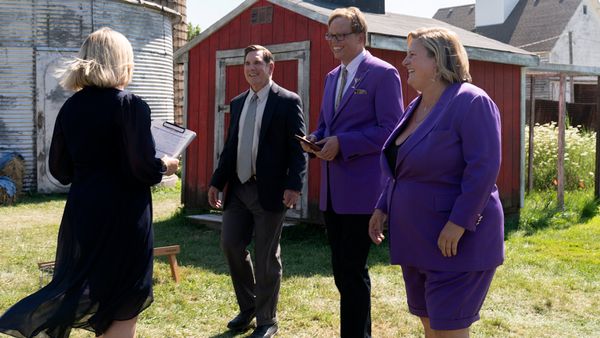
November 5, 2017
Ganglord Trust
Sura Wood READ TIME: 4 MIN.
What direction might a magazine photo essay have gone if it hadn't been complicated, possibly compromised, by editorial agendas, attitudes toward race and class, or commercial imperatives?
Those are some of the intriguing questions behind "The Making of an Argument" at BAMPFA. The compact yet potent exhibition dissects the process of creating "Harlem Gang Leader," a photojournalist project by Gordon Parks, who, after gigs at Vogue and Glamour, became the only African American staff photographer at Life magazine, where the piece was published in 1948. The show, which whets the appetite for a comprehensive retrospective of Parks' work, is interesting from both a sociological and nuts & bolts journalistic perspective, though you may be left wondering exactly whose argument this was, and who was advancing it.
Parks succeeded in winning the trust and cooperation of the story's initially reluctant subject, Leonard "Red" Jackson, the 17-year-old head of the Harlem Midtowners gang, with a ride in the photographer's snazzy new Buick Roadmaster, a car with street cred to burn, sealing the deal. Over the course of several weeks, Parks trailed Red and his fellow gang members, producing hundreds of negatives, which he turned over to his editors. They chose 21 black & white pictures (displayed at the beginning of the show) that ran in conjunction with text informed by Parks' experience but not actually written by him.
The exhibition is at its most engaging when providing insight into how and on what basis critical judgment calls on content were made. An illuminating section pairs each page from the spread with corresponding contact sheets; some have orange lines and printing instructions from the editors, indicating their thinking and choices. "Life" wanted edge and drama and to heighten aggression and despair, evidenced by the essay's gripping headline: "Red Jackson's life is one of fear, frustration and violence." The hyped-up opener was accompanied by a pensive shot of Jackson with his profile partially in shadow, as he surveys a fire in the distance and calculates his next move. That print is contrasted here with two less somber candidates that were discarded. After the layout was done, the editors selected a picture of Red holding a smoking gun for the cover shot. Parks, believing it would jeopardize Red and the relationship they had built, fought the decision, going so far as to destroy the negative; his story was buried in the back of the issue on page 96.
The crucial role of darkroom techniques and cropping in shaping perception is explored in relation to images like a fistfight sequence that will strike many as quaint by today's standards - more "West Side Story" rumble than the 21st-century killing fields facilitated by easily accessible handguns and Uzis. Parks actually shot the sequence from above and at a remove, but the cropping gives the impression that he and the viewer are closer to the action.
In the stark final image, Red, a towering, broad-shouldered loner in the urban wilderness, walks away from the camera on a desolate and deserted Harlem street. Darkroom manipulation enlarged the figure, intensifying the emotional impact while fueling the Wild West iconography of a gunslinger, the king of a lawless town.
A group of outtakes represents the road not taken. Images of Red sitting on the arm of a chair next to his Mom, sweeping the floor and doing the dishes and getting ready for a date like any other teenager, would have provided a more nuanced portrait and a view into the softer, domestic side of a swaggering bad dude in a rough neighborhood. As seen in a contact sheet, he also had a studious younger brother who preferred reading to conflict, material not sensational enough for one editor, whose blunt dismissal, "Red's young brother/not gangster," says it all.
In an informal epilogue, Lyric R. Cabral's poignant photographs, taken in 2007, capture the once-feared gangster as a frail elderly man whose spindly legs dangle from a doctor's exam table. He died in 2010, outliving the artist who made him famous, or would that be infamous? "Damn, Mr. Parks," Red lamented after the piece was published. "You've made a criminal out of me." (Through Dec. 17.)
It has been almost 70 years since they appeared, but the Life photographs are still fresh and bracing, with a tough yet compassionate narrative "voice." As for the multi-talented Parks, who died in 2006, he remains a hip, trailblazing figure. Among many breakthroughs, he was the first African American to produce and direct a Hollywood movie: "The Learning Tree" (1969), a semi-autobiographical, coming-of-age story about a black youth who, like Parks, grew up in rural Kansas during the Depression, and delved into race, masculinity and the wages of cruelty. The film is part of BAMPFA's "A Choice of Weapons," a related program screening several movies Parks helmed, such as "Shaft," a 1970s actioner memorable for an Oscar-winning earworm score by Isaac Hayes, and Richard Roundtree as an unstoppable private eye going up against white cops and a Harlem kingpin. "Solomon Northup's Odyssey" (1984), made for television on a tight budget, is based on the same 1853 memoir by a free Northern black man kidnapped into slavery that Steve McQueen would adapt nearly three decades later for "12 Years a Slave." Preceded by a pair of early shorts that grew out of his photojournalist work, "Moments Without Proper Names" is a poetic reverie incorporating Parks' photographs, writing, music, and reflections on the country and events that defined him. (Through Dec. 1.)







